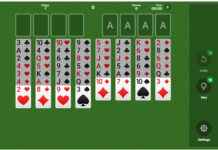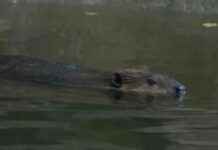Jim Hautman is often out duck hunting and focuses on taking photos of birds using a camera. He’s always looking for the right pose or scene to inspire his next painting.
Hautman, a Chaska resident, has painted many ducks. Hautman has painted many ducks including wood ducks, mallards and loons.
Jim said, “They are just amazing birds.” Jim said that there are many types, each with its own unique colors. They are just incredible to me.”
Every duck hunter in America will soon know two ducks, one redhead and the other whitehead, which Jim painted.
Anyone who wants to hunt migratory waterfowl must purchase a “duck stamp” each year. These scenic stamps are not postage, but permits. The U.S. Overseen. The Fish and Wildlife Service has raised more than a billion dollars to conserve habitat since its inception in the 1930s.
The stamp’s artwork has been selected through a national contest since 1949. Hautman was only 25 years old when he won the first stamp contest in 1989. He flew to Washington the next day to meet with President Obama.
Conor Knighton, Correspondent, asked Jim: “How did that win change your life?”
He replied, “Completely.” “After I won, it was time to hang up the phone. I couldn’t walk 20 yards without it ringing. It rang nonstop.”
His phone keeps ringing. Hautman has won a record six times.
This guy is a regular Duck da Vinci.
Knighton asked: “When you think of your competition, which are you most worried about?”
He smiled and said, “Well, in mine mind, Joe is the greatest threat.”
Joe and Bob Hautman are Jim’s brothers. Joe has won five duck stamp contests:
Bob Hautman won three times.
They are the Duck Dynasty of wildlife, a group of brothers who were self-taught by a passionate hunter and an artist.
Bob stated, “Our mother was our main critic.” She was a great helper when we had problems. She had so much fun doing it. My dad also enjoyed it, as he was a big fan of the duck stamps from the beginning.
Joe is the keeper for their father’s duck stamp collection. It includes a 1934 stamp. He said, “He liked ducks and he liked the images.” “So that’s how I learned about duck stamps.”
Joe won his first contest in 1991 just two years after Jim’s victory.
Joe said, “There was actually quite a bit of disbelief.” “There were people saying, ‘Hey! Wait a minute, who painted this?’ People thought Jim had probably painted it and entered under my name.”
Each brother has his own style. Chris Knutson, owner of Art Barbarians Gallery, Rogers, Minn. said that Bob’s style is a bit more painterly and looser than his brother. Jim is a bit more precise with his paintings. Joe is a little more open to the middle.”
Hautman originals can be purchased at Knutson’s gallery for thousands of dollars. The brothers are best known for their ducks but they also paint blue jays and bison.
Knutson stated, “I don’t know of any other family of artists that even comes close to these guys.”
They grew up in Minneapolis’ suburbs, right next to other well-known brothers. Joel and Ethan Coen lived seven doors down from each other.
The 1996 film “Fargo” features Officer Marge Gunderson as a duck painter. The Coens couldn’t resist giving a shout out to their old neighbors.
Norm Gunderson: I discovered that the Hautmans will be entering a painting this season. Marge Gunderson says: “Aww, hon! You’re better than them!”
They say they are better together, according to the Hautmans. They meet regularly to share their critiques.
Even though the stamp contest does not offer cash prizes, it can still prove very lucrative. The winner can sell thousands of limited edition prints for passionate collectors.
“People like ducks,” Joe said. They literally have a smile on the face. Their bill sort of goes out, if you take a look. They are friendly. They love all types of weather.
You can also paint them in water or in flight. The Hautmans are still drawn back to this challenge, even after all their success.
Knighton asked: “Is there any type of scene or duck that you feel you haven’t quite cracked?”
Bob chuckled, “All of them.”
More information:
Aria Shavelson produced the story. Ed Givnish is the editor.








